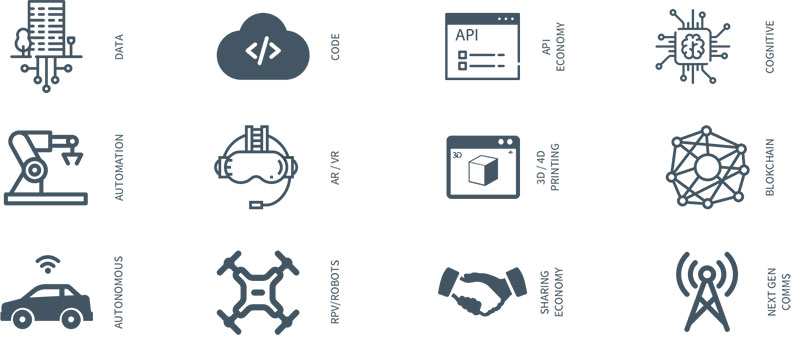Reimagining infrastructure in a smart new world

These disruptions are challenging the traditional roles of government and the supporting ecosystem. They are changing how cities, regions, and even countries function, procure, and deliver their missions and services. They are also disrupting old models of economic development and the approaches we used to use to attract and sustain business investment.
Historically, economic development was driven by the availability of land, buildings, and an educated workforce. Today, cities and regions must look beyond the traditional approaches to investment, attraction, and retention if they are to succeed in the new digital economy.
Cities now must devise strategies that enhance productivity and innovation, while remaining focused on social needs, bridging the digital gaps, and providing equal access to opportunity. They must create approaches to seed, ingest, and mature new information, communications, and operations technologies. These must be woven into the fabric of how they function, how they service their citizens, and how they support their businesses. They must enable innovation to serve and provide access to an improved quality of life for residents. Only then will a city or region be doing what’s necessary to attract the best and the brightest to its workforce and continue to grow, bringing along all its residents as it does.
Technology
Emerging technologies and business models are already disrupting the quality of life for everyone. Of the many technology-led disruptions, some of the most profound changes are being driven by the following Big 12 new innovations and new business models.

- Data is transforming industries and professions.
- The world is being embedded in code.
- The API (application programming interface) economy is democratizing the creation of value.
- Computing is entering the artificial intelligence era.
- Automation is driving a fundamental restructuring of the workforce.
- Augmented and virtual reality is changing how we interact with the physical.
- 3D and 4D printing is changing manufacturing, warehousing, and trade logistics.
- Blockchain is realigning our institutions of trust.
- Autonomous and connected vehicles are forcing a rethinking of our transportation infrastructure.
- The rise of the sharing economy is enabling new creators of value.
- Remote Piloted Vehicles are driving new models of supply chain logistics, and redefining safety.
- Next-gen communications technologies are enabling new ways to collaborate.
Urbanization
It is common knowledge that more of us are moving to urban regions globally. This trend has been accelerating as India and China transform their major economies from industries that were traditionally rural to ones that are urban-based. This concentrated, critical mass of people, assets, and needs has increased the pressure to provide and sustain basic services—infrastructure, social, and human. Organizations and businesses have had to reimagine roles, functions, products, and services to cater to these pressures.
One important benefit of urbanization has been the improved ability to develop, test, and deploy new solutions. Doing so in an iterative, agile manner rapidly proves capabilities and return on investment. Over the last decade, thousands of smart-city solutions have been deployed in urban regions globally. These have tended to be siloed into the traditional pillars of infrastructure, governance, and human needs. Some of these efforts have scaled into larger, sustainable, programmatic efforts that delivered clear value. Even the use of the term "smart cities" has evolved over time, because of this juxtaposition between urbanization and new evolving technologies, led primarily by the abundance of data and the ability to drive decisions from analytics.
Demographics
The third disruption has been caused by the fundamental reshaping of who we are as a society, which is changing the landscape of our needs. According to the most recent United Nations estimates (2017), almost one-half of the world lives in countries where the population growth is “below replacement fertility,” i.e., with a total fertility rate below 2.1 births per woman. Many mature economies already have negative population growth. Generational needs are shifting to accommodate this new reality by taking advantage of new technologies and urbanization.
Over the next couple of decades, we are going to commute differently, be more environmentally conscious, have new needs regarding education, work, and social interactions, and use common services collaboratively.
For example, with the growing maturity of 3D/4D printing and advanced light-manufacturing capabilities, global trends in supply-chain logistics are shifting. This could mean less container ships coming to our ports, more localized manufacturing hubs in new developments and city centers, and a need to shift workforce and educational requirements to cater to new industries. With the growing acceptance of connected and autonomous vehicles, we must plan for fundamental changes in city layouts, traffic management, parking needs, people and goods movement, and all the associated logistics. Many solutions can contribute to innovative development, and the toolkit is expanding rapidly as these trends evolve and new technologies are introduced.
One additional factor to consider is the life cycle of what we build. Most of the thousands of smart-city projects completed so far have been done to optimize operations—essentially to find better answers to ever-existing questions. As many of these types of projects have been done over the last decade, we’ve now started to ask new and better questions, ones that can help us plan and design better.
We are now starting to think about how our cities and regions can support changing demographics, changing use cases, changing needs over the next 30, 50 or a hundred years. Sustainable economics and triple-bottom-line ROIs will be critical factors for us to incorporate as we remake our world. This is just the start.
